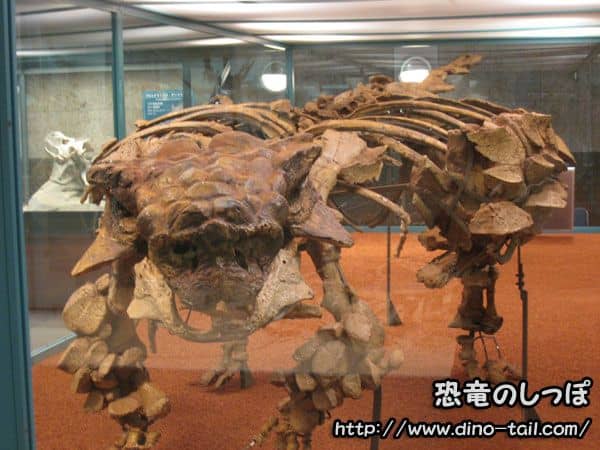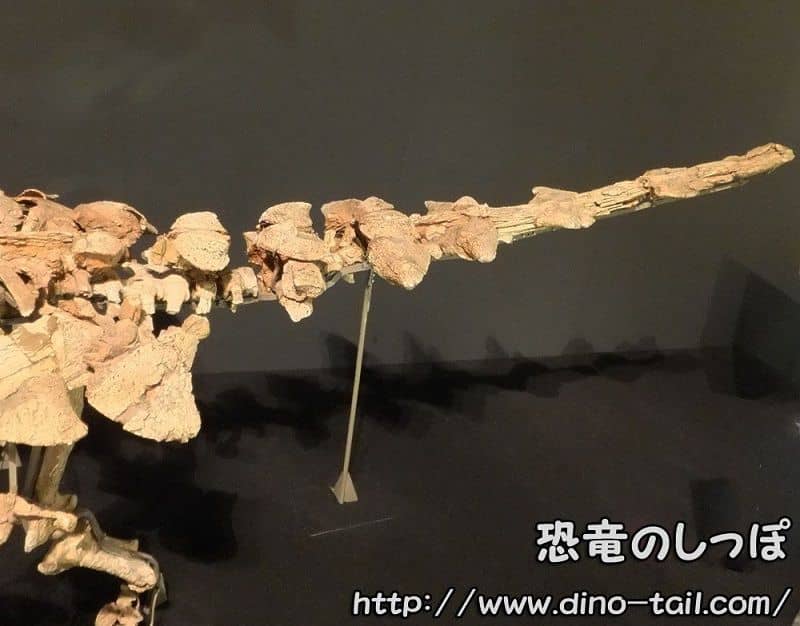About Saichania
| Scientific Name (Genus) | Saichania |
| Meaning of Name |
The beautiful one
Sayiqan (beautiful) [Mongolian] - ia [Latin suffix] |
| Classification | Ornithischia, Thyreophora (Ankylosauria, Ankylosauridae) |
| Total Length | Approx. 5m |
| Diet | Herbivorous |
| Period | Late Cretaceous (approx. 72-70 million years ago) |
| Species | Saichania chulsanensis |
| Year of Paper Publication | 1977 |
| Description Paper |
Ankylosauridae (Dinosauria) from Mongolia.
Palaeontologia Polonica. 37. by Maryanska, T. 1977. |
Features: A Desert Specialist
Saichania had developed amazing adaptations to survive in harsh, dry environments like the Gobi Desert.
A Natural High-Performance Air Conditioner
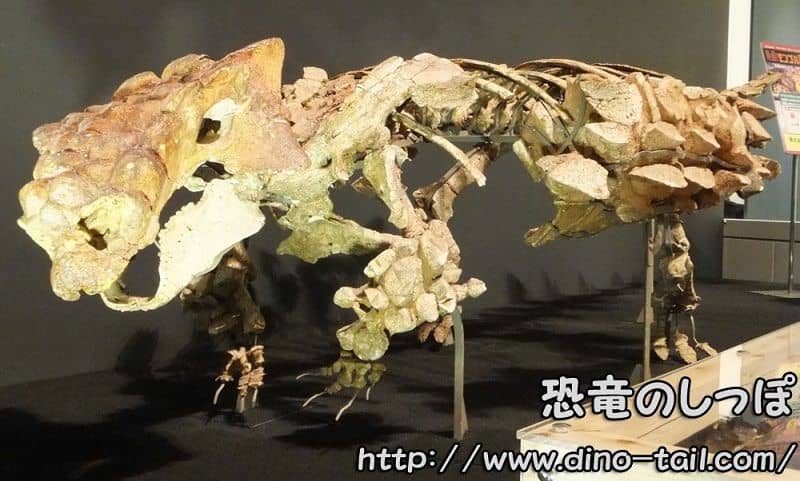
The secret lies in its very complex, winding nasal passages. This structure is thought to have functioned like a natural, high-performance air conditioner.
- It humidified the dry air it breathed in, protecting its lungs.
- It recovered moisture from its exhaled breath, minimizing water loss from its body.
- It may have also had 'salt glands' to excrete excess salt from its body.

A Mouth for Eating Tough Plants
Unlike many other ankylosaurs, the roof of Saichania's mouth (palate) was secondarily reinforced with bone. This sturdy palate is thought to have allowed it to eat tough, fibrous desert plants by pressing them against it with its powerful tongue.
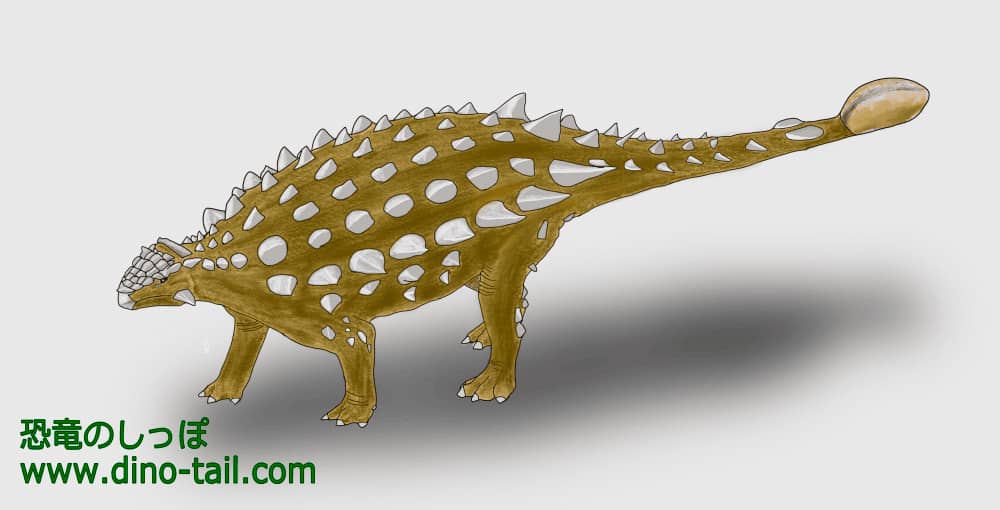
Discovery and Description Paper
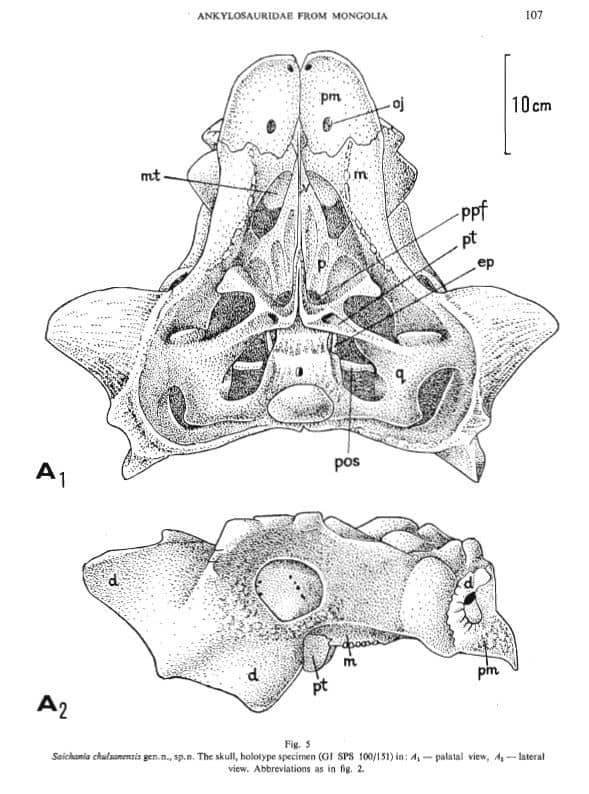
Source: Ankylosauridae (Dinosauria) from Mongolia. Palaeontologia Polonica. 37. by Maryanska, T. 1977.
In 1970-1971, a Polish-Mongolian expedition to the Gobi Desert discovered ankylosaur fossils. In 1977, the Polish paleontologist Teresa Maryańska described the new genus Saichania. The genus name means 'the beautiful one,' reflecting the excellent preservation of the holotype specimen. The holotype specimen is cataloged as GI SPS 100/151 and was excavated with the skull, 17 vertebrae, and the left shoulder and forelimb still articulated.
Saichania has been excavated from the Barun Goyot Formation (about 72-71 million years old) and the Nemegt Formation (about 70 million years old) in the Gobi Desert of Mongolia.
Also, the discovery of a subadult (juvenile) was reported in 2011, but subsequent investigation revealed that it belonged to Pinacosaurus.
The 'Secret' of the Beautiful Fossil: A Composite Skeleton
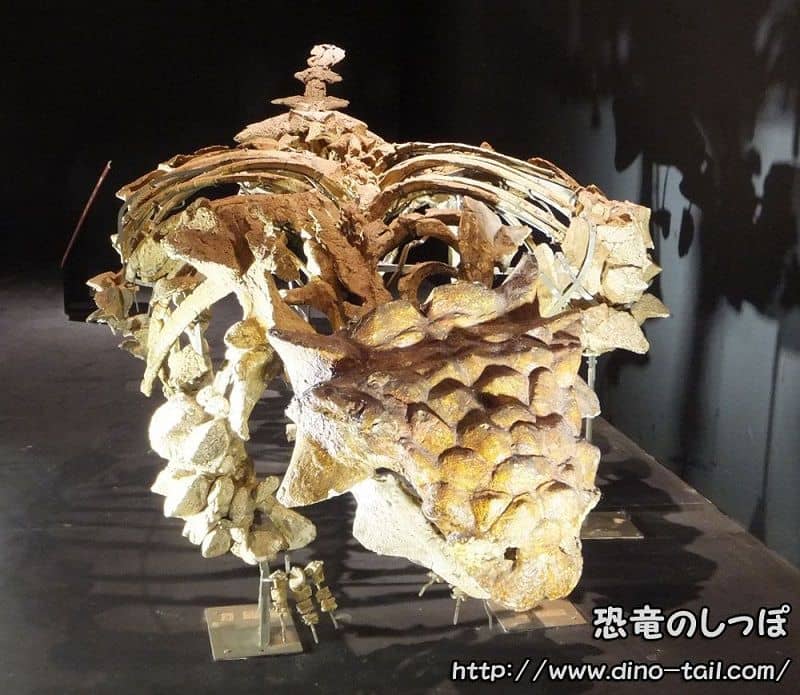
*The latter half of the body is a reconstruction based on a different species of dinosaur.
As its name 'the beautiful one' suggests, a very well-preserved skull and the front half of the body of Saichania have been found. However, there is a big secret to the famous complete skeleton of Saichania that we see in museums.
As a result of a re-examination by Dr. Victoria Arbour and her colleagues in 2014, it was revealed that these complete skeletons are 'composite skeletons' reconstructed by combining the head and front half of Saichania with the latter half of the body of a different type of ankylosaur (probably Tarchia).
In other words, the exact shape of Saichania from the hips back, especially the hind limbs and the tail club, is actually still unknown. This is an interesting story that shows how difficult it is to find a single, perfect skeleton and how paleontologists have strived to reconstruct the whole picture from fragmentary evidence.
Saichania Stamp & Fossil Gallery
